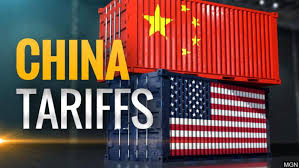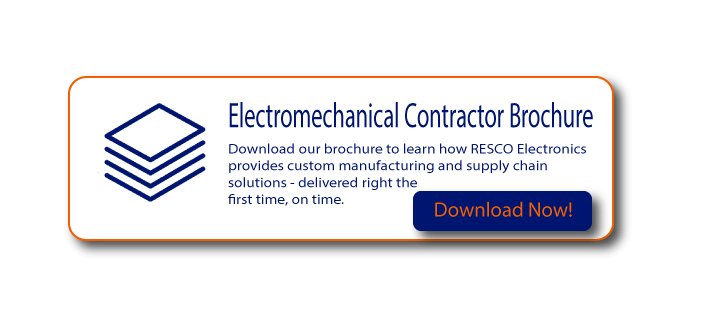No doubt most of you are aware that the US placed a 25% tariff on certain electronic  components and other products manufactured in China effective July 6, 2018. These tariffs were announced last month by the US Trade Representative (USTR) and are being imposed pursuant to Section 301 of the Trade Act of 1974 in retaliation for what the US views as the unfair trade practices of China.
components and other products manufactured in China effective July 6, 2018. These tariffs were announced last month by the US Trade Representative (USTR) and are being imposed pursuant to Section 301 of the Trade Act of 1974 in retaliation for what the US views as the unfair trade practices of China.
The tariffs imposed so far are included on the so called “List 1” which can be accessed here. This list includes many of the commodities used in the manufacture of cable assemblies most notably electrical connectors. It also includes many types of electronic components, relays, switches, fuses, and some types of motors. Clearly the tariffs imposed on these products will have an impact on the cost of completed assemblies in the US. There is also a proposed ”List 2” which can be accessed here. Among other items List 2 includes additional types of motors, integrated circuits, and insulated wire. Products on this second list do not yet have tariffs imposed but could before the end of the year.
As of today, most electronic component distributors and contract manufacturers are trying to understand the actual impact that these tariffs will have on material costs. RESCO can be counted among this group. Although our internal analysis is far from complete, one thing that is now obvious is that the tariffs, once they make their way through the supply chain, will be significant. Much of the content that goes into the manufacture of cable harnesses and other electro-mechanical assemblies is made in China and is subject to the 25% tariff.
In theory, the high tariffs would lead the component manufacturers, most of whom are US based companies, to shift production to countries not affected by the tariffs. However, I suspect there will be little movement of production since most do not expect these tariffs to persist over the long haul. The Trump administration seems to have imposed the List 1 tariffs to create a stronger negotiating position on other trade issues. Many in the industry are assuming that once these other trade issues are resolved, the tariffs will be lifted.
Given the supposed short-term nature of the tariffs, it is hard to imagine component manufactures being willing to make investments in new production outside of China. And even if they were willing to make such an investment, it would take several years to bring that new non-China production capacity on-line. The result is that the tariffs are likely to stay in place or potentially be expanded (List 2) for a year or more while the US and China continue their trade war, although no one really knows for sure.
At RESCO we intend to hold-off on tariff pass-throughs as long as possible. But at best, our efforts will only amount to a delaying tactic. Unless the US quickly repeals these new tariffs, we too will be forced to pass the cost along.
The bottom line is that all that participate in this supply chain (component manufacturers, distributors, contract manufactures, and OEMs) will feel and have to deal with the effects of these tariffs.
About the Author
 David Copenhaver is President of RESCO Electronics, a Baltimore based manufacturer electronic assemblies and value added reseller of auto ID equipment to original equipment manufacturers. Before joining RESCO in 2003, David was the Senior Vice President of Operations and member of the Board of Directors for US Office Products, a publicly traded distributor of office products that is now part of Staples. Beginning in 1989, David co-owned and managed The Smith-Wilson Co., an Orlando based distributor of office products that was sold to US Office Products in 1996.
David Copenhaver is President of RESCO Electronics, a Baltimore based manufacturer electronic assemblies and value added reseller of auto ID equipment to original equipment manufacturers. Before joining RESCO in 2003, David was the Senior Vice President of Operations and member of the Board of Directors for US Office Products, a publicly traded distributor of office products that is now part of Staples. Beginning in 1989, David co-owned and managed The Smith-Wilson Co., an Orlando based distributor of office products that was sold to US Office Products in 1996.
David has a Bachelor of Science in Electrical Engineering and a Masters in Business Administration both from the University of Virginia. He is married and lives in Arlington, Virginia with his wife and three sons.


